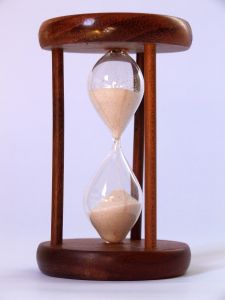Date Selection and Radiometric Dating
Except for fundamentalist evolutionists, many people know that radiometric dating is tenuous at best. It involves a number of assumptions, which is bad enough, but there is a passel of circular reasoning and cherry-picking of data to fit deep time presuppositions. The same is true in radiocarbon dating.
Some hominid remains were discovered in Portugal, and secularists commenced to assigning dates to the rocks. However, the standard used was predetermined to give researchers the deep time that they wanted to have. They also had results that were the opposite of what they wanted, and inconvenient dates were simply rejected. Very unscientific and dishonest.
Carbon-14 dating is reasonably useful when the years in question are comparatively recent, and it is mighty helpful when written records and other corroborating items are available. But C14 needs to be occasionally recalibrated. One reason is that scientists realize that there are factors that affect the dates, so when this recalibration occurs, the dates are no longer accurate. Secularists reject the Genesis Flood, but that cataclysmic event had a multitude of effects all over the recently-created world.
 |
| Credit: Freeimages / Pedro Simao |
A recent Neanderthal study in the journal Science mixed detailed archaeological finds with stories about human origins. As is typical, the report’s age assignments for fossils fit evolutionary time instead of the Bible’s much shorter timeline of thousands of years. Its age-dating exercises reveal more about what these scientists believe than what the rocks and fossils actually show.You can read the rest by following the link to "How Not to Date Hominid Remains", and we have another article to examine on a closely related subject next:
The Neanderthal human remains were found in a cave on the Portuguese coast. The Science report dated them “to ~86 to 106 thousand years ago.” What evidence demands that we accept this age instead of the Bible’s historical timeline?
Carbon-14 dating is reasonably useful when the years in question are comparatively recent, and it is mighty helpful when written records and other corroborating items are available. But C14 needs to be occasionally recalibrated. One reason is that scientists realize that there are factors that affect the dates, so when this recalibration occurs, the dates are no longer accurate. Secularists reject the Genesis Flood, but that cataclysmic event had a multitude of effects all over the recently-created world.
It’s the best-known radiometric dating technique for recent events, but it relies on numerous shaky input measures.For old times' sake, you can read the rest by clicking on "Guesswork in Carbon Dating Exposed".
Radiocarbon dating is the “archaeological workhorse” of dating techniques but is the horse overworked? In her article in Nature May 19, Nicola Jones puts the best hoof forward on this widely-trusted dating technique, but also exposes numerous assumptions and educated guesses that go into the method. Radiocarbon dating is getting a “major reboot,” she says, and the consequences will change history: “A long-anticipated recalibration of radiocarbon dating could shift the age of some prehistoric samples hundreds of years.”
Each year, it’s fun to celebrate birthdays. If we’re not sure of someone’s age, we can always check their birth certificate. But can any reliable methods determine the age of an object without a historical record?